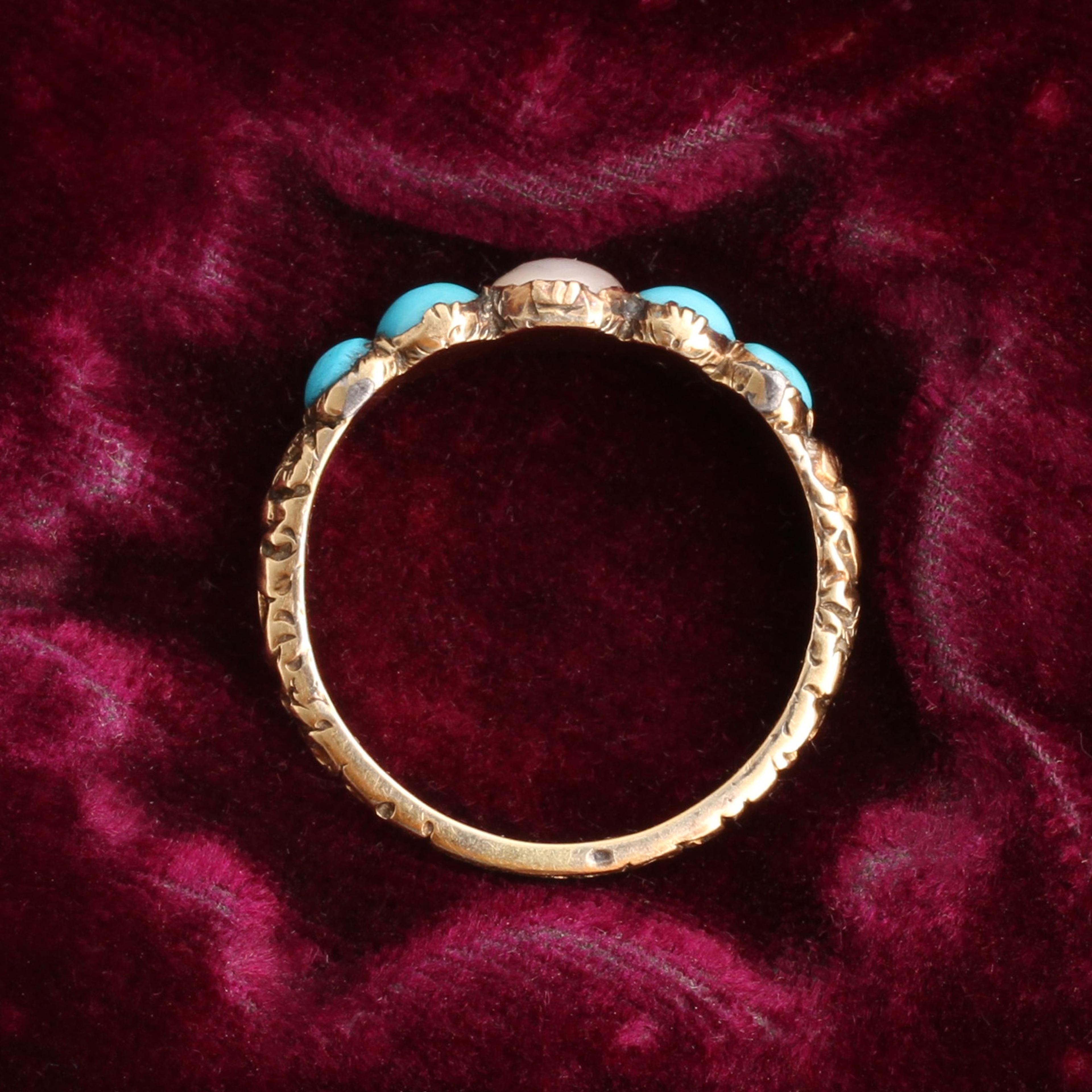This Georgian ring features bright robin's egg blue turquoise cabochons and a single split pearl set in crimped collets. The shoulders and shank are decorated in high Gothic Revival style with floral-esque swirls and flourishes rendered in high relief.
thedetails
- Materials
14k gold (tests), turquoise cabochons, split pearl
- Age
c. 1800
- Condition
Very good
- Size
8, resizing not recommended; 5.7mm head, 1.3mm hoop
- Custom Label
Scroll down completely for specifics.
Need more photos?
Send us an email to request photos of this piece on a model.

Aboutthe
GeorgianEra
1714 — 1837
As imperialist war raged in the Americas, Caribbean, Australia, and beyond, the jewelry industry benefited: colored gems from all over the empire became newly available. A mix of artistic influences from around Europe contributed to the feminine, glittering jewels of the era. Dense, ornate Baroque motifs from Italy showed up in Georgian jewelry, as did French Rococo’s undulating flora and fauna. Neoclassical style made use of Greek and Roman motifs, which were newly popular due to the recently uncovered ruins of Pompeii and Herculaneum. Lapidary methods improved: the dome-shaped rose cut was popular, as was the “old mine cut,” a very early iteration of today’s round brilliant cut.
The boat-shaped marquise diamond cut was developed around this time, supposedly to imitate the smile of Louis XV’s mistress, the marquise de Pompadour. Paste — an imitation gemstone made from leaded glass — was newly developed in the 18th century, and set into jewelry with the same creativity and care as its more precious counterparts. Real and imitation gems were almost always set in closed-backed settings, lined on the underside with thin sheets of foil to enhance the color of the stone and highlight it's sparkle. This makes Georgian rings tough for modern women to wear, especially on an everyday basis: genteel, jewelry-owning ladies of the 18th century were not famous for working with their hands like we are. Nor did they wash their hands as much as we do. Water will virtually ruin a foiled setting, so take special care with your Georgian ring. Very little jewelry from this period is still in circulation, and it's very difficult to repair.
please note:Care Reminder
The gems in this ring are all porous stones and sit in closed settings, so please try to avoid getting this ring wet and remove it when showering, swimming, as well as when doing heavy work with your hands. Remember, this jewel is over 200 years old and isn't intended for heavy-duty, everyday wear.





